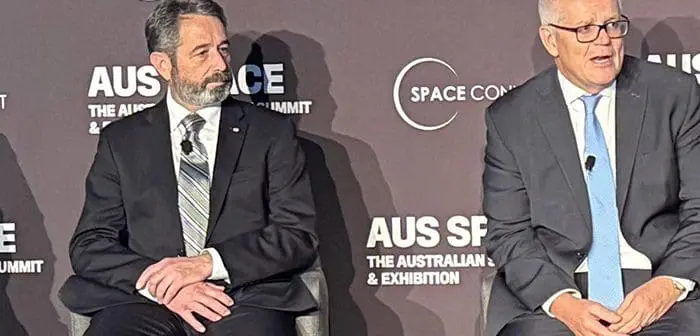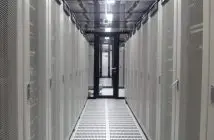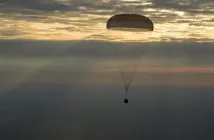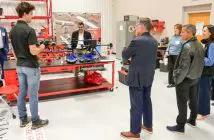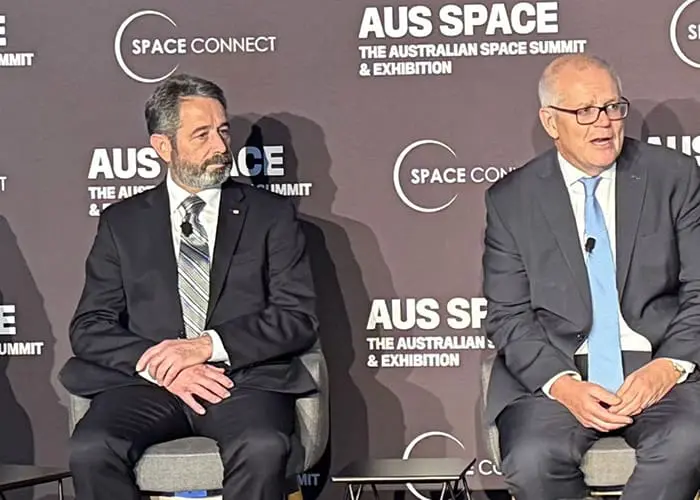
As the global strategic landscape shifts rapidly, Australia finds itself at a pivotal moment, redefining its defence and space capabilities through deeper alliances and industrial innovation.
Exhibited at a Sydney space summit this week, a panel session focused on industrial ecosystem strategy and highlighted how the AUKUS partnership and evolving industrial policies could reshape Australia’s defence industry and its role within the Indo-Pacific security framework.
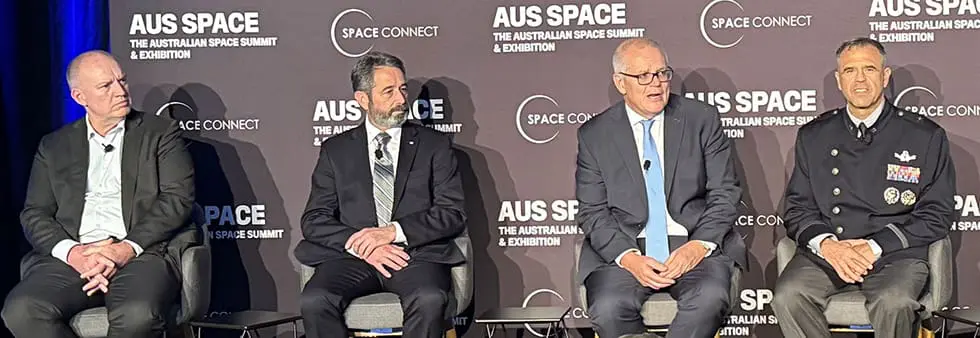
Image Credit: MySecurity Media. R-L – Brigadier General Anthony J. “Chachi” Mastalir, Hon. Scott Morrison, Alan Clements, Gary Hale
Disruption and Integration: The AUKUS Catalyst
Former Australian Prime Minister Scott Morrison kicked off the discussion by emphasising the need for a single industrial ecosystem across allied nations to drive innovation and technological advantage.
“We disrupt,” he said. “We need to create single ecosystems, industrial ecosystems. We need to make single regulatory systems as fast as we can, and we need people to be able to move around and intelligence, data and other things to share far more seamlessly because that’s what can drive the innovation that is necessary to seize that technological advantage.”
This concept, he explained, was central to the birth of AUKUS, which initially aimed to integrate maritime defence capabilities but is now extending into a broader technology sphere, including space, a domain Morrison identified as the next frontier of strategic control.
Brigadier General Mastalir, representing the US military perspective, reinforced the critical role of alliances in the Indo-Pacific.
“The alliance with Australia is absolutely critical,” he said, adding that space capabilities are essential for projecting power over long distances.
“The joint combined force will not be successful without space,” Mastalir asserted, underscoring the need for collaborative mechanisms that bring advanced space technologies into the hands of warfighters.
Industrial Ecosystem: From Regulation to Supply Chains
One key challenge the panel dissected was how to turn the vision of a common industrial ecosystem into a practical reality. Morrison highlighted regulatory reform as a crucial enabler, particularly reforms to ITAR (International Traffic in Arms Regulations), which historically constrained technology sharing between allies.
“We’ve achieved more on liberalising ITAR and export controls in the last 17 years than ever before,” he said, crediting AUKUS with accelerating this progress. “That frees up the jurisdictions to be effectively integrated as they innovate.”
This regulatory easing complements efforts to build an integrated defence industrial base, where supply chains and companies across Australia, the US, and the UK are enmeshed, working collaboratively “right from inception through production as one industrial system.”
Mastalir pointed to the fragility of global supply chains in space technology, noting how “all the primes are using subs and subs to subs, and everything funnels down to one or two folks in the world that make that widget that you need.”
He highlighted the need to map the supply chain, identify choke points, and scale production collaboratively across allied countries, a practical opportunity AUKUS could facilitate.
Australia’s Unique Position and Innovation Strengths
Gary Hale, representing Australian industry, reflected on the nation’s place in this evolving ecosystem. He pointed out Australia ranks 132nd in OECD manufacturing but possesses unique innovation strengths.
“We’re a world leader in automation and robotics, especially in mining and agriculture,” he said, suggesting these capabilities could be leveraged in defence and space sectors to overcome Australia’s relatively small population and vast operational area.
Hale also underscored the challenge of rebuilding the tiered industrial and innovation ecosystem lost through past acquisition processes, recalling initiatives like Spacefest that enabled universities and startups to contribute to defence technology.
He argued that Australia has a nascent capability that can integrate with US and UK systems, but strategic focus and funding are critical.
Mastalir echoed the importance of aligning industrial efforts with strategic military needs, emphasising that readiness and deterrence require sustained investment.
“You can’t take for granted that the stability we enjoy today in the Indo-Pacific will always be there,” he warned. “One of the ways you can double down on peace is by demonstrating you’re prepared to fight if called upon.”
Strategic Investment and Industry Policy
The conversation also touched on the broader need for a coherent industry policy, especially given the post-globalisation disruptions in supply chains.
“Industry policy is back in vogue,” Morrison affirmed. “You have to make choices. You can’t fund everything. Strategy must set priorities, and then they must be funded.”
He outlined that Australia’s Trailblazer program, with its six key focus areas, was an early attempt to embed this principle, ensuring industrial strategy is aligned across government sectors, including skills, immigration, and education.
Hale added that Australia faces the dual imperative of urgently delivering capability while also building long-term sustainable industrial capacity, a balancing act complicated by domestic political cycles and evolving global threats. He contrasted Australia’s approach with the UK’s “pre-war mentality,” driven by immediate security concerns due to proximity to conflict zones like Ukraine.
Emerging Technologies and the Future Workforce
The panel also considered how emerging technologies such as automation, quantum computing, and advanced manufacturing can disrupt and reshape defence industry capabilities.
Morrison described these as part of the “different little disruptive technologies that will reshape the industrial and economic infrastructure of all countries.”
Addressing concerns about workforce engagement, Hale highlighted that while many university students may initially appear disengaged from defence issues, attendance at defence-related lectures shows a growing interest in alternative career paths tied to long-term national capability building.
Looking Ahead: Australia’s Place in Global Defence Architecture
The discussion concluded with reflections on Australia’s potential involvement in high-tech initiatives such as the US-led Golden Dome missile defence program. Mastalir described Golden Dome as “a continuation of what Reagan started” with the Strategic Defence Initiative, now leveraging advanced technologies and interagency collaboration.
While it is “probably too early” for Australia to decide on joining, Mastalir emphasised the country’s technological prowess, including Canberra’s CEA technology and its international collaborations, as a strong foundation for future integration.
Australia stands at a strategic crossroads where defence capability, industrial policy, and international partnerships converge.
The AUKUS alliance serves not just as a military pact but as a transformative framework for building a resilient, integrated industrial ecosystem across allied nations.
This new approach emphasises regulatory reform, supply chain resilience, strategic investment, and innovation to meet the challenges of the Indo-Pacific era.
This is an AI-assisted article

